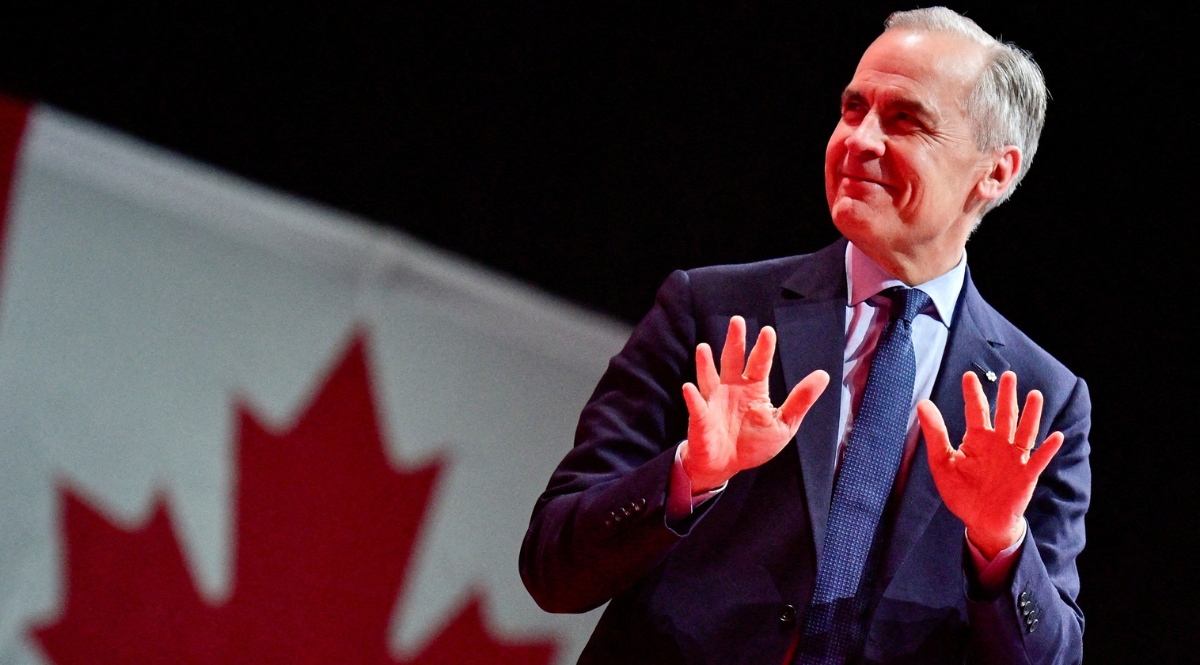Liberals Win Canada's Federal Elections
On 28 April, Canada held federal elections for the House of Commons. The Liberal Party of Canada (LPC) won, and its leader Mark Carney will become the next prime minister. The Conservative Party of Canada (CPC), which was predicted to win the elections before Donald Trump was sworn in as U.S. president, lost narrowly and will be the second grouping in parliament. The New Democratic Party (NDP), which supported previous Liberal governments, were defeated. The challenge for the new government will be to normalise relations with the Trump administration while gradually reducing Canada’s dependence on the United States.
 Jennifer Gauthier / Reuters / Forum
Jennifer Gauthier / Reuters / Forum
What influenced the election results?
Contrary to the opposition’s hopes for change, the elections to the 343-seat House of Commons were again won by the Liberals (LPC, 43.5% of votes), which means that they will form a minority government based on 167 seats. For the Liberals, this is their fourth victory in a federal election since 2015. The LPC’s victory was influenced by various factors. The election of Carney as the new leader of the party and interim prime minister of Canada (which took place in March of this year after Justin Trudeau resigned this position) had a ositive impact on the LPC’s image, which in December last year enjoyed only 20% support. Carney sought to distance himself from some of the former prime minister’s policies that were seen as controversial by Canadians—for example, he repealed the consumer carbon tax (in December last year, 37% of respondents declared support for the party that would abolish this tax). Also crucial to the LPC’s victory was voter trust in Carney to shape relations with the Trump administration, whose aggressive policies and trade war have hammered relations with Canada. Many Canadians see Carney’s experience in the financial sector, especially when he led the banks of Canada and England, as attributes that can help in normalising relations with the U.S.
What are the political prospects for the other parties?
The opposition in the next federal parliament will remain the Conservatives, supported by 41.4% of the population. The CPC managed to increase its number of seats from 119 in the 2021 elections to 132. The LPC’s small seat advantage over the CPC, resulting in the formation of a minority government, does not guarantee full freedom to implement political plans. Conservative leader Pierre Poilievre, who lost his seat, was ineffective in convincing voters to support his programme, including plans to ease the conflict with the Trump administration. Although he maintained a majority of support in the western provinces (Alberta and Saskatchewan), he failed to expand his electorate in key urban and suburban ridings near large metropolitan areas, such as Toronto and Montreal. Third and fourth place in parliament will be taken by Bloc Quebecois (BQ, 6.4%), a regional sovereignty party running only in the province of Quebec, and the NDP (6.2%). In comparison to the previous election, both parties lost support to the LPC. The NDP was the one most affected by this—leader Jagmeet Singh lost his seat and resigned, while the party is likely to receive only seven or eight seats (compared to 25 in 2021). The presence of the BQ in parliament and the support of some Quebec voters for the LPC means that a challenge for the Carney government will be to take into account the interests of this province in its domestic and foreign policy agendas. The Green Party of Canada will also have one representative in parliament.
How will the Canadian government pursue relations with the Trump administration?
Before the election, Carney signalled several times that Canada’s trust in the U.S. has been undermined and that bilateral relations must be reformatted. The next government will seek to ease tensions with the Trump administration in key areas for Canada, particularly trade, where disruptions could lead to an economic recession. It will declare further increases in defence investments and cooperate on key issues concerning the security of both countries, including reducing incidents of irregular migrants crossing the Canadian border with the U.S. and stopping drug smuggling. At the same time, Carney announced that he would defend Canadian interests and society against Trump’s expansionist rhetoric. Therefore, he intends to apply a reciprocal approach to the U.S., using, among other things, secondary tariffs on imports from states governed by Republicans, for which Canada is the main market (19 states).
What are the prospects for Canada’s post-election foreign policy?
A key foreign policy challenge for the new government will be to reduce Canada’s dependence on the U.S. To this end, the new government will undertake multiple actions, including likely increasing Canada’s involvement in transatlantic relations. This will include strengthening relations with traditional partners (for example, the UK, France, and Germany) as well as with the European Union. It may also include Central and Eastern European countries, including Poland, in several areas, such as military, economic, and energy, as well as supporting Ukraine. Carney will also implement the plans set out in the 2022 Indo-Pacific strategy, which assumes greater economic cooperation with countries in the region and ASEAN, as well as security and defence cooperation with Australia, New Zealand, Japan, and South Korea. Another important direction for Carney will be the Arctic. The implementation of announced investments in strengthening its northern flank defence will mean closer military ties at the bilateral level and within NATO with key regional partners, including the Scandinavian countries.



.jpg)
.png)
